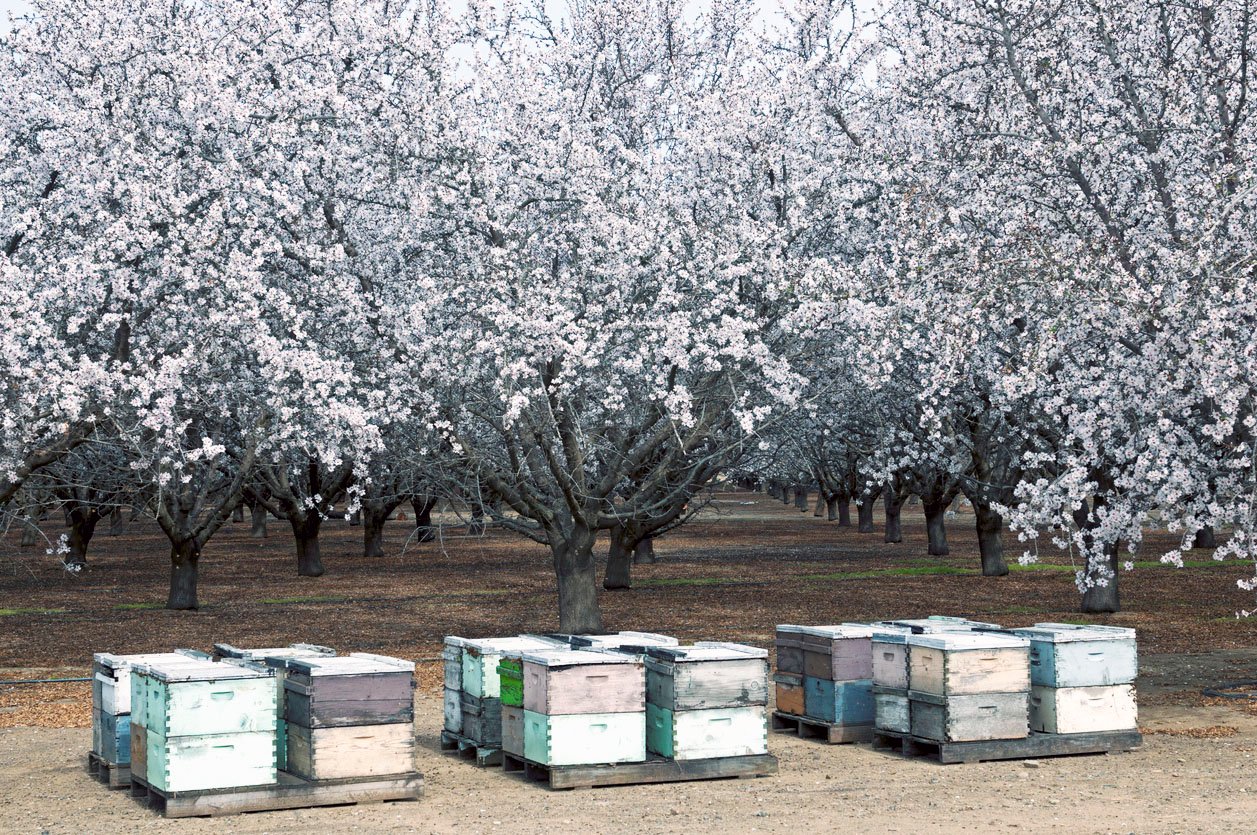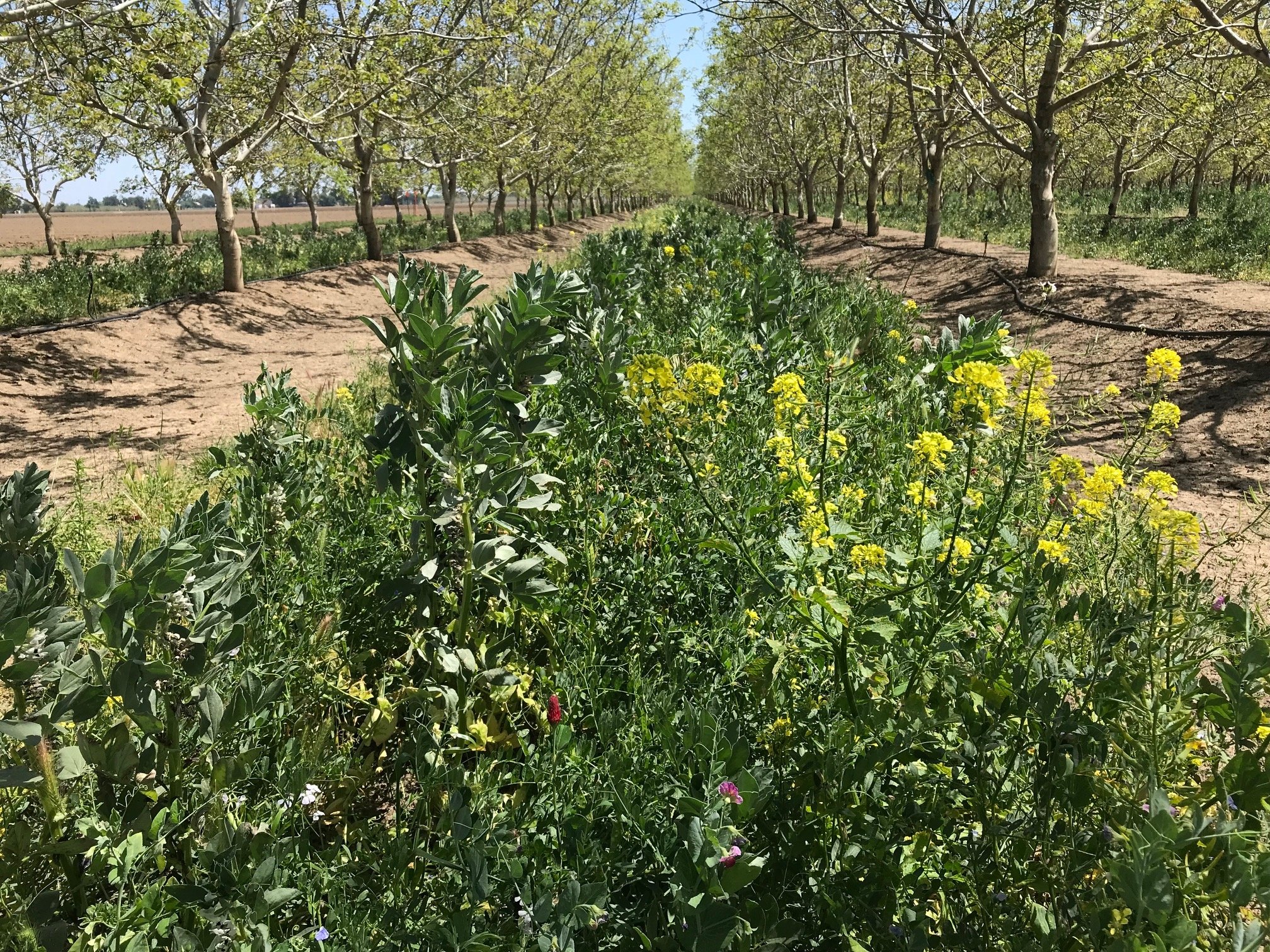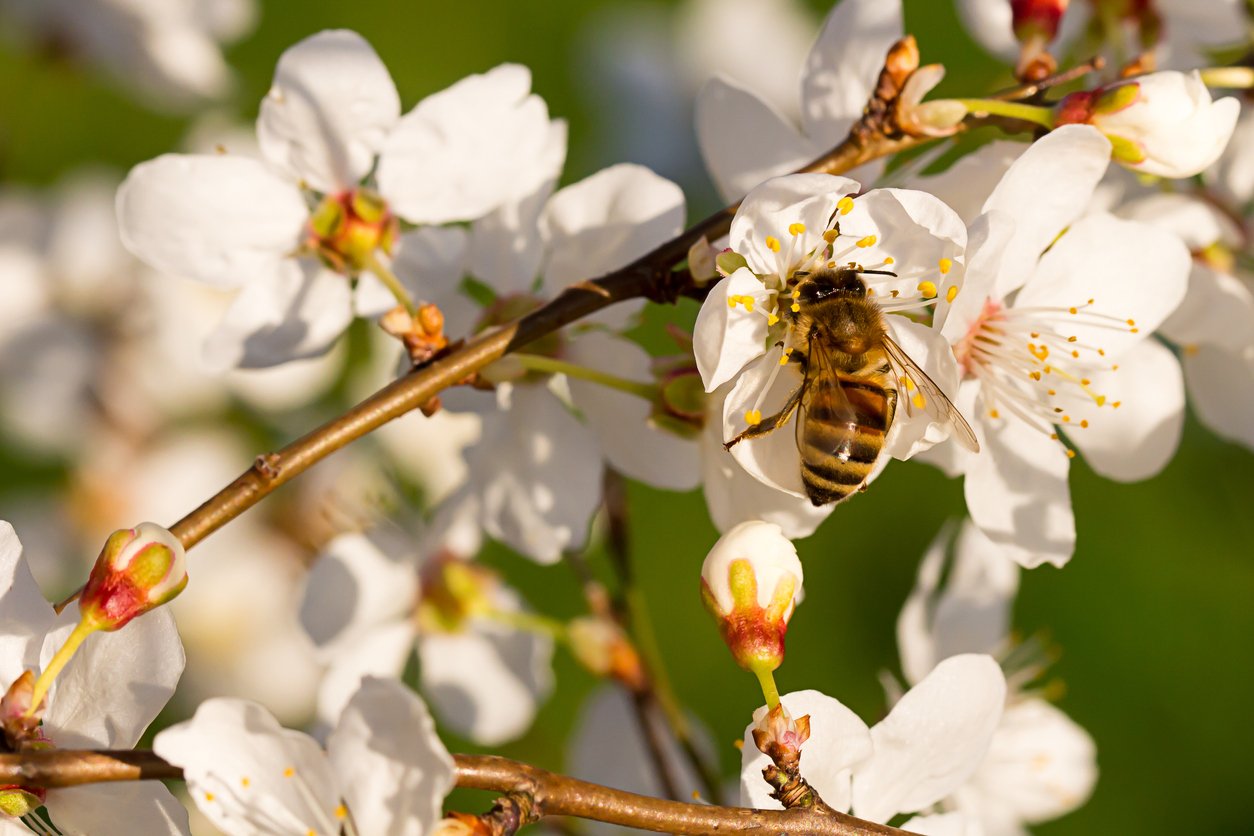If you work in agriculture, you know there are certain times in the season that require your team to put in an almost superhuman effort. When bloom hits, it may be just as well that many of the most critical workers aren't people—but bees.
Every year, honeybees pollinate crops across California—including more than a million acres of almond trees. The fact that almonds bloom relatively early in the year means they have less competition from other flowering plants for pollinators' attention. But it also means that the bees the trees depend on may confront cooler weather that depresses their activity level.
We can't control the weather, of course, but there are specific steps growers can do to help bees survive tough conditions and fulfill their role in a healthy orchard.
Understanding common threats to bees
It's now a widely known fact that populations of honeybees and most other pollinators are in decline. The preliminary findings from one recent study by the Bee Informed Partnership found that between April 2019 and April 2020, "beekeepers in the U.S. lost an estimated 43.7% of their honeybee colonies."
There are a range of possible factors in the decline. One is nutrition: although honey bees can fly up to 8 miles in search of food, long trips forced by dwindling food sources take their toll. Bees are also vulnerable to a variety of diseases and pests. Bacteria, fungi, viruses, and insect predators pose a threat to the health of hives.

Lastly, and most relevant to growers, is the effect of pesticides and other chemical inputs on pollinator populations. According to an EPA study, “Pesticide exposure at the individual level might be lethal, sublethal, or altering to the behavior of the bee. At the colony level, this exposure might impact an entire hive, species, or (eventually) crop yields."
How growers can support pollinators
Given the ultimate threat to orchard performance and yield, what can growers do to help maintain bee populations?
The Almond Board offers extensive resources to help growers help bees. During bloom in particular, the board's top recommendations are:
- Ensure clear communication—for example between growers, beekeepers, and PCAs.
- If you need to spray, do so in the late afternoon or evening.
- Avoid tank-mixing products.
- Avoid applying insecticides.
Beyond these core guidelines for bloom, there are additional steps growers can take to support bees year-round.
Billy Synk is Director of Pollination Programs for Project Apis m. (PAm), which funds and coordinates research in the U.S. and Canada to protect bee health and crop production. In addition to following Almond Board guidelines, Synk suggests providing bees with sources of clean water and incorporating flowering cover crops into the orchard.
“Good nutrition is crucial to honeybee health,” Synk says. By providing diverse and abundant sources of nutrition, bees can withstand multiple stressors that lead to declining populations."

Photo: UCANR
PAm provides interested California growers with free cover crop seed mixes through the Seeds for Bees Program, which tailors the blend to bees' nutritional needs in each location. The Bee & Butterfly Habitat Fund does similar work in the Midwest.
“Selecting specific cover crops that flower early before native wildflowers and crops bloom, like mustard and brassicas, give the bees a health boost prior to almond bloom," Synk explains.
Synk points out that adding crops benefits mores than the bees. Studies show that when planted in almond orchards in the fall, cover crops take advantage of winter rains, don’t significantly impact irrigation requirements, and can even increase almond production. In a research review, "Almond Doctor" David Doll reported that, “slightly higher almond yields were obtained in the mature orchards after one year of cover cropping: in Merced, +225 lbs/acre compared to resident vegetation/weeds and +217 lbs/acre compared to bare soil.”
Clear communication and keeping tabs on hives
Limiting threats to bees depends to a certain extent on knowing where the hives are. Since 1986, beekeepers have been required to register their bees annually with their local County Agriculture Commissioners and continually inform them when hives are relocated.
What started as hives represented by push-pins on paper maps has evolved alongside GIS technology, which today powers tools such as CalAgPermits' BeeWhere initiative.
“We provide a platform for beekeepers and pesticide applicators to communicate," explains Ruthann Anderson, president of the California Association of Pest Control Advisers. "For those that choose to use BeeWhere to comply with California law and regulations, we track and share hive locations, in real time, throughout the state.”

Movement of hive locations is now easily updated via smartphones. Pesticide applicators can see hives within a mile of the intended spray location, and beekeepers can elect to be called or emailed 48 hours prior to applications.
“The program ... facilitates conversations between pesticide applicators, beekeepers, and growers to ensure the safety of the hive,” says Anderson. "Bringing all parties together enables them to collaborate, coming up with a mutually beneficial solution for bees, beekeepers, growers, and applicators.”
While there are many pollinator safety programs throughout the US, the BeeWhere program is one example of the California agriculture community experimenting with a model that could later find its way to other states. After all, people all across the country depend on honeybees—not just for their California almonds, but for a third of all the food on their tables.
